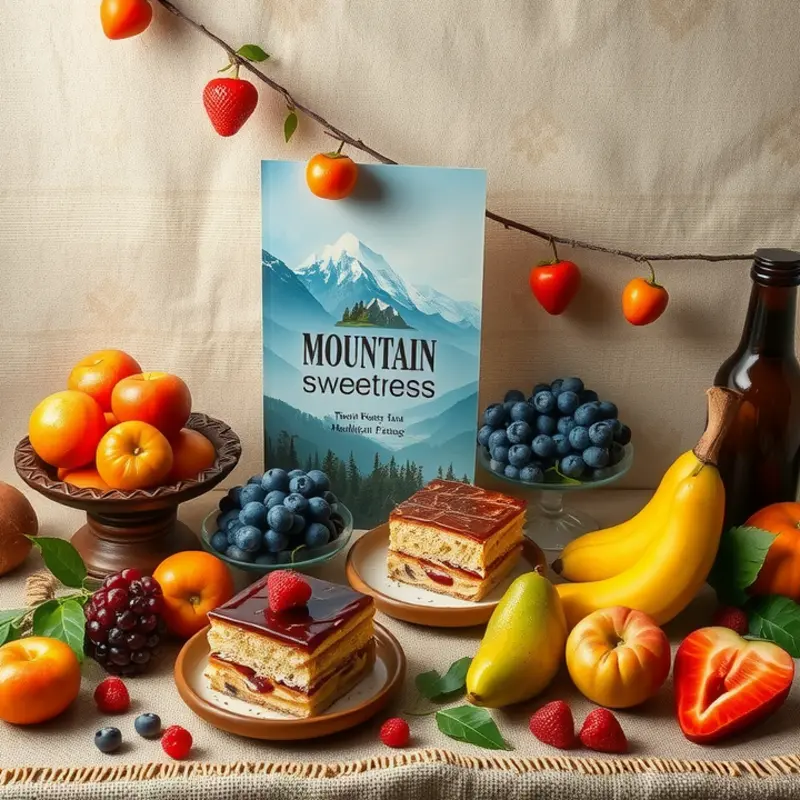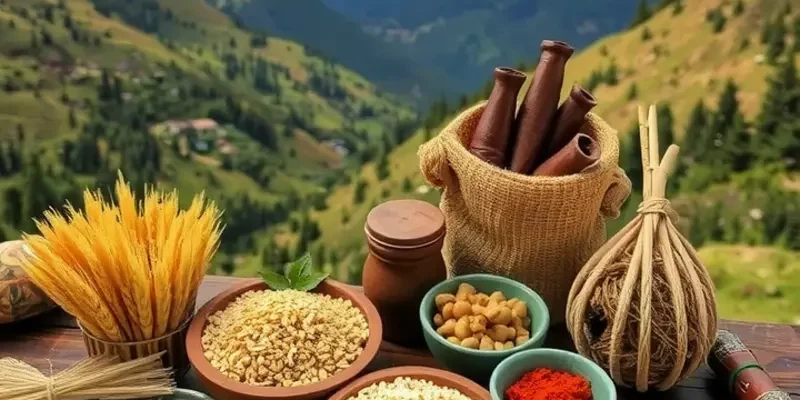Mountain cultures around the globe are synonymous with resilience and adaptability, reflected in their unique food traditions. Nestled at higher altitudes, these communities have crafted distinctive culinary practices shaped by geography, climate, and cultural exchanges. This article delves into the flavorful dishes born from mountainous terrains, showcasing how these vibrant cultures harmonize with their rugged surroundings to produce remarkable and hearty foods that warm the soul.
Hearty Delights: Traditional Mountain Dishes

Mountain communities, often isolated by their rugged geography, have developed culinary traditions that are both practical and deeply flavorful. These dishes are rich with history, innovation, and the natural bounty that surrounds them. Altitude and challenging climates have necessitated creative solutions in food preparation and preservation, resulting in an array of hearty dishes that nourish both body and soul.
In the Himalayas, Dal Bhat is a staple dish. It consists of lentil soup served with rice and a variety of side dishes such as vegetables, achar (pickles), and greens. The dish is woven into the rhythm of daily life, providing the fuel needed for mountainous treks. The high altitude impacts cooking times and techniques, requiring patience and skill to achieve the perfect texture and flavor.
Central Asia offers Beshbarmak, a celebrated dish among the Kazakh people. Translating to “five fingers,” it highlights boiled meat, typically horse or mutton, served over flat noodles. These simple ingredients form a meal intended to be shared, reflecting the importance of community and hospitality in Kazakh culture. The cold climate influences the use of preserved meats, ensuring sustenance during harsh winters.
In the Andes, Pachamanca is a traditional Peruvian dish prepared by earth oven cooking. Potatoes, corn, meats, and herbs are buried with heated stones, resulting in a complex, earthy flavor. This technique reflects the indigenous peoples’ intimate knowledge of their land and its cycles. The altitude’s impact includes a naturally high starch content in Andean potatoes, adding a unique fluffiness and taste.
The Alps bring us Raclette, originating from Switzerland. Melted cheese is scraped onto boiled potatoes, pickles, and bread, forming a warming and rustic meal perfect for cold mountain evenings. This dish highlights the dairy richness of the region, with cheese deriving its distinct flavor from pasture-raised cows grazed at elevated altitudes. The tradition of consuming Raclette is as much a social experience as it is a culinary one, promoting warmth and camaraderie.
Tibet offers the humble yet delicious Tsampa, a toasted barley flour. Tsampa is often mixed with tea or yak butter, providing a nutritious and energy-dense staple for the nomadic lifestyle. Barley’s ability to thrive in high altitudes makes it ideal for the Tibetan landscape. The simplicity of Tsampa belies its adaptability and importance to Tibetan culture, showcasing how mountain resources dictate food evolution.
In the Appalachian Mountains, Cornbread is a testament to the fusion of Native American and settler customs. The use of corn, readily grown and accessible, highlights the adaptation to available resources. This bread has become emblematic of Appalachian cuisine, its slightly sweet and crumbly texture serving as a perfect complement to the region’s hearty stews and soups.
Each of these dishes tells a story of resilience, adaptation, and cultural pride. The elevation and environment of each region dictate not only the ingredients available but also influence culinary techniques. To further explore how different cultures have adapted ingredients to fit their unique environments, you may find this guide on ingredient adaptations in global cuisine insightful. Together, they provide a rich tapestry of flavors that define mountain dining across the globe.
Sweet Treats: Desserts and Snacks from the Mountains

Mountain communities have long cherished desserts and snacks that reflect their unique landscapes and resources. These sweet treats are not merely indulgences; they embody the essence of survival and celebration in elevated terrains.
The rugged terrain of the Alps has given birth to luscious pastries adorned with alpine berries. Species like lingonberries and bilberries thrive in these high altitudes, lending their tartness to cobblers and tarts. The tangy sweetness of these berries is often balanced with honey, a natural sweetener made by bees buzzing through meadow flowers. This natural harmony of flavors is emblematic of the connection between nature and culinary tradition in mountain life.
In Tibet, yak butter plays a starring role in many sweet snacks. Tsampa, a staple flour made from roasted barley, is often mixed with yak butter and sugar to create sweet dough balls. Known locally as ‘papa,’ these are traditionally carried by climbers for nutrition and energy during high-altitude treks. The emphasis on nutrition is crucial in these regions where every calorie counts. This reflects a greater cultural respect towards food as sustenance, where nothing is wasted, a philosophy to embrace for low-waste cooking prep.
The Dolomites in northeastern Italy give us the delight known as “Pan de Sorc.” This spiced bread incorporates cornmeal, rye, and wheat, mixed with nuts like walnuts or hazelnuts that grow abundantly in these regions. Typically enhanced with dried fruits and spices such as anise or fennel, it reflects the trade routes that brought new ingredients to these remote areas, adding layers of complexity to the mountain palate. This treat is traditionally baked for festive occasions, illustrating its role in both everyday life and special celebrations.
The Andes mountains reveal the soulful taste of ‘papa’ sweets, using local potatoes. Papas, often caramelized with sugar, are turned into delectable confections. Also gaining prominence are purple corn desserts, exploiting the natural hue and antioxidant properties of this native crop. These vibrant sweets not only represent the ingenuity of Andean cooking but celebrate the vibrancy of Peruvian culture.
In the Himalayas, the arrival of festivals brings with it the enticing aroma of Sel Roti, a traditional Nepali sweet. Made from a batter of rice flour, sugar, and clarified butter, this donut-like bread is fried until golden and crisp. Served during Tihar, the festival of lights, it symbolizes prosperity and goodwill. The festive consumption illustrates the intertwining of food and spiritual sustenance in these isolated regions.
Mountain desserts and snacks are more than just culinary delights. They serve as a testament to the adaptation of humans in harmony with challenging environments. Each ingredient reveals the history of trade influences and seasonal availability, fostering a deep respect for local produce and sustainable practices. Through these delectable treats, mountain cultures continue to weave their stories, wrapped in the rich tapestry of history and landscape.
Final words
Exploring the culinary traditions rooted in mountain cultures reveals a world rich in flavors and stories. Each dish serves as a testament to the resilience and creativity of the communities that produced it, utilizing locally sourced ingredients that reflect their surroundings. From hearty stews that withstand harsh winters to sweet treats that celebrate the bounty of nature, mountain foods encapsulate a deep appreciation for the environment and ancestral wisdom. These unique culinary experiences encourage a deeper understanding and appreciation of regional diversity, inviting us to savor every bite of the world’s rich heritage.








